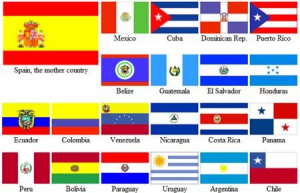Difference between revisions of "Language/Spanish/Grammar/Direct-Object-Pronouns"
m (Quick edit) |
|||
| Line 313: | Line 313: | ||
===SPANISH DIRECT & INDIRECT OBJECT PRONOUNS MADE EASY ...=== | ===SPANISH DIRECT & INDIRECT OBJECT PRONOUNS MADE EASY ...=== | ||
<youtube>https://www.youtube.com/watch?v=_4KN96L1KCY</youtube> | <youtube>https://www.youtube.com/watch?v=_4KN96L1KCY</youtube> | ||
===DIRECT & INDIRECT OBJECT PRONOUNS in Spanish: ALL you ...=== | ===DIRECT & INDIRECT OBJECT PRONOUNS in Spanish: ALL you ...=== | ||
Latest revision as of 12:58, 31 July 2024
| ◀️ Demonstrative Adjectives — Previous Lesson | Next Lesson — Indirect Object Pronouns ▶️ |
Welcome to our lesson on Direct Object Pronouns in Spanish! Understanding direct object pronouns is essential for mastering sentence construction and communication in Spanish. These little words can make your speech and writing much more fluid and natural. By the end of this lesson, you’ll not only know what direct object pronouns are, but you'll also be able to use them confidently in your conversations.
This lesson is structured as follows:
- Introduction to Direct Object Pronouns
- Forms of Direct Object Pronouns
- Usage of Direct Object Pronouns
- Examples of Direct Object Pronouns in Sentences
- Practice Exercises
- Summary
Introduction to Direct Object Pronouns[edit | edit source]
In Spanish, just like in English, we often replace nouns with pronouns to avoid repetition. This is especially useful when the noun has already been mentioned or is easily understood from the context. Direct object pronouns are used to replace the direct objects in sentences.
For example, if you say "I see the car" (Yo veo el coche), you can replace "the car" with a pronoun. Thus, "I see it" becomes "Yo lo veo." This not only makes your sentences shorter but also helps maintain a natural flow in conversation.
Forms of Direct Object Pronouns[edit | edit source]
Direct object pronouns in Spanish are straightforward, but they must match the gender and number of the nouns they replace. Here are the forms:
| Pronoun | Gender/Number | English Translation |
|---|---|---|
| me | N/A | me |
| te | N/A | you (informal) |
| lo | Masculine Singular | him/it (masculine) |
| la | Feminine Singular | her/it (feminine) |
| nos | N/A | us |
| os | N/A | you all (informal in Spain) |
| los | Masculine Plural | them (masculine) |
| las | Feminine Plural | them (feminine) |
As you can see, direct object pronouns are quite simple! The crucial part is remembering the gender and number of the noun you are replacing.
Usage of Direct Object Pronouns[edit | edit source]
Direct object pronouns are used when the action of the verb is directly affecting the object. In Spanish, they typically appear before the conjugated verb or attached to an infinitive or gerund.
Here are some key rules:
- Positioning:
- Before the verb: "Yo la veo." (I see her.)
- Attached to the infinitive: "Voy a verla." (I am going to see her.)
- Agreement:
- Make sure to choose the correct pronoun based on gender and number. For example:
- "El libro" (the book) becomes "lo."
- "La mesa" (the table) becomes "la."
Examples of Direct Object Pronouns in Sentences[edit | edit source]
Let's look at some examples to clarify the use of direct object pronouns.
| Spanish | Pronunciation | English |
|---|---|---|
| Yo tengo el libro. Lo tengo. | jo ˈteŋɡo el ˈlibɾo. lo ˈteŋɡo. | I have the book. I have it. |
| Ella ve a Juan. Lo ve. | ˈeʝa βe a xwan. lo βe. | She sees Juan. She sees him. |
| Nosotros compramos las flores. Las compramos. | noˈsotɾos komˈpɾamos las ˈfloɾes. las komˈpɾamos. | We bought the flowers. We bought them. |
| Tú llamas a María. La llamas. | tu ˈʝamas a maˈɾia. la ˈʝamas. | You call María. You call her. |
| Ellos están mirando la televisión. La están mirando. | ˈeʝos esˈtan miˈɾando la teleβiˈsjon. la esˈtan miˈɾando. | They are watching TV. They are watching it. |
| ¿Tú tienes el coche? Lo tienes? | tu ˈtjenes el ˈkoʧe? lo ˈtjenes? | Do you have the car? Do you have it? |
| Yo como la pizza. La como. | jo ˈkomo la ˈpitsa. la ˈkomo. | I eat the pizza. I eat it. |
| Ellas ven a los niños. Los ven. | ˈeʝas βen a los ˈniɲos. los βen. | They see the children. They see them. |
| Usted necesita el libro. Lo necesita. | usˈted neθesiˈta el ˈlibɾo. lo neθesiˈta. | You (formal) need the book. You need it. |
| Nosotros tenemos las galletas. Las tenemos. | noˈsotɾos teˈnenos las ɡaˈʝetas. las teˈnenos. | We have the cookies. We have them. |
These examples illustrate how seamlessly direct object pronouns can be integrated into sentences, making them more concise and fluid.
Practice Exercises[edit | edit source]
Now it's time to put your knowledge to the test! Below are exercises designed for you to practice what you've learned about direct object pronouns.
Exercise 1: Fill in the blanks[edit | edit source]
Complete the sentences with the appropriate direct object pronoun.
1. Yo veo a María. Yo ___ veo.
2. Ellos tienen el perro. Ellos ___ tienen.
3. Tú compras el vestido. Tú ___ compras.
4. Nosotros escuchamos la música. Nosotros ___ escuchamos.
5. Ella llama a sus amigos. Ella ___ llama.
Exercise 2: Rewrite the sentences[edit | edit source]
Rewrite the sentences, replacing the direct objects with pronouns.
1. Yo tengo el libro.
2. Tú ves la casa.
3. Ellos compran los zapatos.
4. Nosotros escuchamos la canción.
5. Ella mira a Juan.
Exercise 3: Choose the correct pronoun[edit | edit source]
Select the correct direct object pronoun to complete the sentences.
1. Ella tiene el coche. Ella ___ tiene. (lo/la)
2. Nosotros comemos las galletas. Nosotros ___ comemos. (los/las)
3. Yo miro la película. Yo ___ miro. (lo/la)
4. Tú escuchas la radio. Tú ___ escuchas. (lo/la)
5. Ellos ven a sus padres. Ellos ___ ven. (los/las)
Exercise 4: Translation[edit | edit source]
Translate the following sentences into Spanish, using direct object pronouns.
1. I see him.
2. We have it.
3. You (formal) call her.
4. They are watching it.
5. She loves them.
Exercise 5: Create your own sentences[edit | edit source]
Write five sentences using direct object pronouns. Share them with a partner and discuss.
Solutions and Explanations[edit | edit source]
Here are the solutions for the exercises provided above:
Exercise 1: Fill in the blanks[edit | edit source]
1. Yo la veo.
2. Ellos lo tienen.
3. Tú lo compras.
4. Nosotros la escuchamos.
5. Ella los llama.
Exercise 2: Rewrite the sentences[edit | edit source]
1. Yo lo tengo.
2. Tú la ves.
3. Ellos los compran.
4. Nosotros la escuchamos.
5. Ella lo mira.
Exercise 3: Choose the correct pronoun[edit | edit source]
1. Ella lo tiene.
2. Nosotros las comemos.
3. Yo la miro.
4. Tú la escuchas.
5. Ellos los ven.
Exercise 4: Translation[edit | edit source]
1. Yo lo veo.
2. Nosotros lo tenemos.
3. Usted la llama.
4. Ellos la están mirando.
5. Ella los ama.
Exercise 5: Create your own sentences[edit | edit source]
This exercise is subjective, but here are some example sentences:
1. Yo la quiero (I want it).
2. Tú los ves (You see them).
3. Ella lo tiene (She has it).
4. Nosotros las compramos (We buy them).
5. Ellos lo miran (They watch it).
Summary[edit | edit source]
Congratulations! You have successfully learned about Direct Object Pronouns in Spanish. Remember, using these pronouns will not only make your sentences shorter and more concise but will also help you sound more like a native speaker. As you continue practicing, you'll become more comfortable with their usage. Keep an eye out for opportunities to incorporate what you've learned into your conversations!
Videos[edit | edit source]
Learn Spanish! - How to use Direct objects (lo, la, los, las) - YouTube[edit | edit source]
Indirect Object Pronouns in Spanish (compared to Direct Object ...[edit | edit source]
SPANISH DIRECT & INDIRECT OBJECT PRONOUNS MADE EASY ...[edit | edit source]
DIRECT & INDIRECT OBJECT PRONOUNS in Spanish: ALL you ...[edit | edit source]
Sources[edit | edit source]
- Direct Object Pronouns in Spanish | Purpose, List & Examples ...
- Direct Object Pronouns Spanish | SpanishDict
- Direct Object Pronouns In Spanish | How To Use Them Well
Other Lessons[edit | edit source]
- How to use Ser o Estar (verb to be)
- Present Tense Verbs
- Simple Present Tense
- The Spanish Alphabet and Pronunciation
- How to Use Be (SER and ESTAR)
- Tener
- Descriptive Adjectives
- Conditional Mood
- Simple Past Tense
- Eso Esto Aquello
| ◀️ Demonstrative Adjectives — Previous Lesson | Next Lesson — Indirect Object Pronouns ▶️ |

